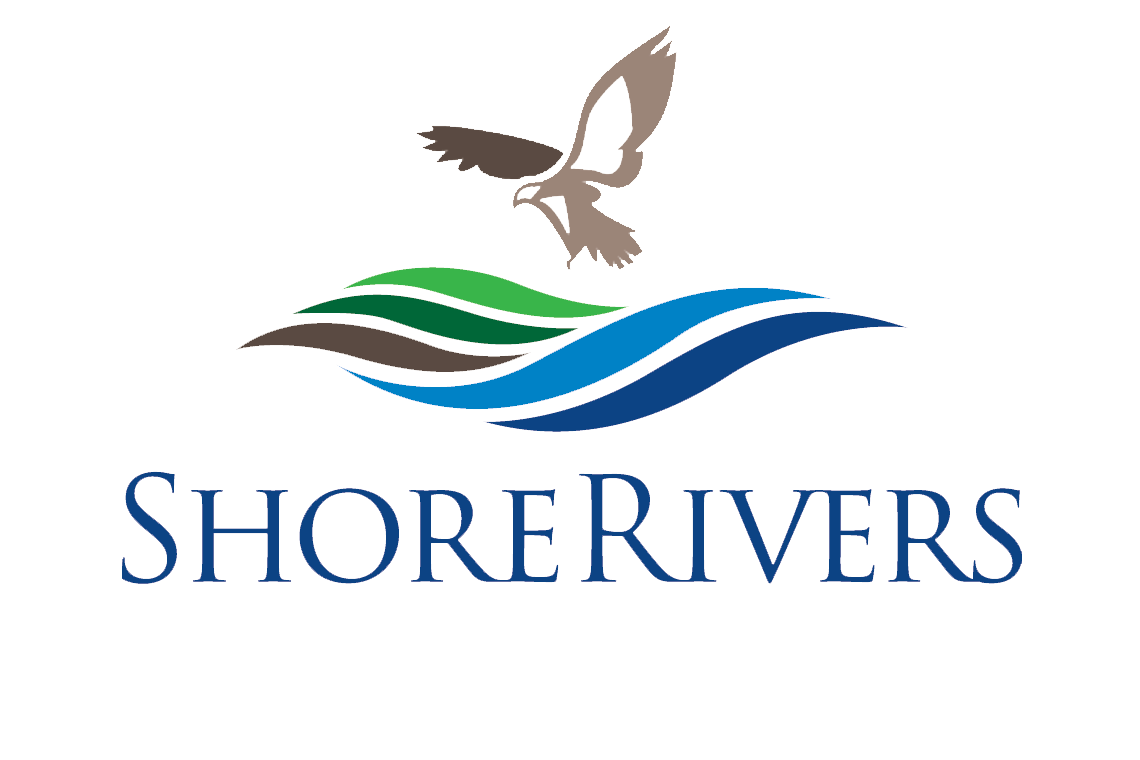ShoreRivers recently completed construction of a large restoration project on the Wye Mills campus of Chesapeake College that will significantly reduce nutrient and sediment pollution entering the Wye River complex. Funded by the Maryland Department of Natural Resources, this project restores almost 29 acres of marginal cropland to ponds, wetlands, and forest. The project is slated to include over 13 acres of tree plantings by next spring. Queen Anne’s County funded the ecological design of the project.
Concept drawing shows southeast facing view from US Route 50 of the wetland project as it will look in 2022. (courtesy of Sustainable Science, LLC)
The Chesapeake College Agriculture to Ecosystem project addresses 28.72 acres of an agricultural field with a badly incised ditch that drains excess nutrients and sediment into the Wye East River. The land was removed from row crop production and converted into two ponds, a series of wetland cells with habitat islands, planted infiltration berms, and approximately 13.5 acres of tree plantings. The campus of Chesapeake College is located at the headwaters of the Wye East River, which is impaired by nitrogen, phosphorus, sediment, and seasonal bacteria pollution.
This site underwent a total conversion from an agricultural field to high quality wetland and forest habitat, all in view of heavily trafficked Route 50. Each year, the project will prevent approximately 56 tons of sediment, 885 pounds of nitrogen, and 89 pounds of phosphorus from entering the Wye River. The design incorporates a 2,200-foot walking path to allow students to use the project as an outdoor laboratory.
Chesapeake College wetland project under construction in the summer of 2021.
Kristin Junkin, director of operations & finance at ShoreRivers, said, “ShoreRivers has been working with Chesapeake College since 2016 to complete over 20 different restoration and stormwater projects on the campus. This latest wetland conversion follows a series of earlier projects including a stream restoration, bioswales, turf conversion to wildflower meadows, switchgrass buffers, and tree plantings. The nutrient and sediment reductions achieved by these projects are particularly important because Chesapeake College sits on an ecologically sensitive parcel of land at the headwaters of the Wye East River. We are grateful to the college for collaborating with us to accomplish this important work for clean rivers.”
"We're proud of the sustainability efforts at Chesapeake and of our long partnership with ShoreRivers," said Chesapeake College President Clifford P. Coppersmith. "This latest project preserves the natural beauty of Chesapeake's campus while contributing to the environmental health of the surrounding area and providing hands-on learning opportunities for our students. We work with ShoreRivers to ensure that the resources and way of life on the Eastern Shore can be sustained for future generations."
For more information about the Chesapeake College restoration projects, contact ShoreRivers Director of Operations & Finance Kristin Junkin at 443.385.0511 ext 204 or junkin@shorerivers.org.

























